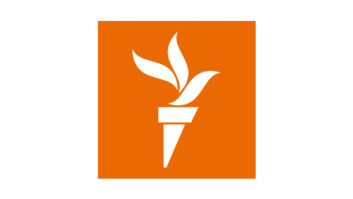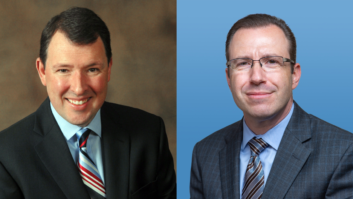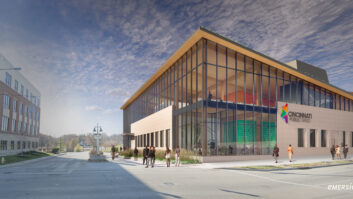When the holiday season rolls around, a tradition for many families is to walk or drive through neighborhoods featuring festive lights. Sometimes these DIY light shows evolve into more spectacular displays, much like what can be seen driving down the iconic “Candy Cane Lane” in Torrance, Calif., where I grew up.
For Michael Simmons, what started as a passion for Christmas light displays in 2007 has transformed into the creation of a new mobile app destined to spread some holiday cheer. Launched at the end of 2024, Tune2 is a new generation audio platform used to support audio synchronization for personalized events, including commercial, residential and DIY holiday lighting shows. (Think of how the gusts of water at the Fountains of Bellagio in Las Vegas fly in tandem with the music. Now apply that concept with holiday light displays.)

A longtime IT professional, Simmons is a self-described “Christmas lighting community veteran,” with his own home Christmas display becoming one of the largest light shows in the U.S. in 2010. His light show was even named “Best Holiday Lights Display” in America by CBS and was one of the first competitors to be cast for season one of “The Great Christmas Light Fight on ABC,” which aired December 2013.
Simmons said there is a bigger market for holiday light displays than you would think. He said $15 billion was spent on Halloween displays (U.S. only) and Christmas light shows and drive-thrus (internationally) in 2024 alone. Who knew?
“I got involved in Christmas lighting — animated Christmas lighting specifically — back in 2007 when I found out that I could connect Christmas lights to a computer,” Simmons said. “ I love Christmas, I love Christmas lights and I obviously love computers. So when I found out that I could connect both, I was just hooked.”

As for the technicalities of such a large-scale production (often DIYed in someone’s front yard), such a visual spectacle usually calls for an auditory element.
The only problem was, the main way commercial and residential operators broadcast their music for these light shows was to use an unlicensed FM frequency … which eventually proved problematic when trying to adhere to FCC rules.
Simmons said it was, of course, possible for hosts to these residential light shows to use outdoor speakers, but that option was limited due to local noise ordinances and pesky neighborhood complaints.
In 2020, spreading holiday cheer through unauthorized airwaves became even more problematic with the introduction of the PIRATE Act, which increased penalties for pirate radio broadcasting and cracked down on unlicensed signals — like those broadcast at your friendly neighborhood light show.
“There was really no way for you to have a two-mile-long drive-thru and have an unlicensed FM transmission [while adhering to] FCC Part 15 rules, because you’re only limited to 200 feet, so the math just doesn’t work,” said Simmons. “You can’t cover that ground. So everyone that had these drive-thrus were essentially breaking federal law.”
Simmons said even he was a culprit with his own light display back in the day because “there was no other way to do it.”
A need for a new way to broadcast these synchronized light shows became even more prominent as AM/FM radio became increasingly difficult to find in the car — or was no longer included as a free service by certain auto manufacturers like Tesla.
“The cars that have HD radios for satellite radio, HD/FM radio, etc., they’re all digital now,” said Simmons, “and with that there is a delay that happens because the analog FM signal that gets sent out needs to be converted to a digital signal in [the car’s] circuitry. So you can have up to an eight second delay now with these FM broadcasts because of HD Radio.”
Thankfully, for light show fanatics everywhere, with the launch of Tune2, that is no longer the case.
Simmons said he spent years researching how to create a technology that adheres to FCC rules while eliminating latency issues for these synchronized shows.
“I finally found a way to make a mobile application that was cloud-based over the internet, where you can have synchronized audio for a light show completely in sync with the latency through a cell phone. And last year I formed the company and released the product to the public for beta testing.”
The Tune2 app made its public debut in December 2024 as the holiday season hit full swing. Since then, there have been more that 20,000 app downloads, with less than 1% uninstalling the app, said Simmons. He said users were responsive to the platform’s improved audio quality and simple mobile interface.
“From Dec. 1 to Dec. 31, of 2024, we had over 230,000 songs played through our platform, which comprised approximately 9,000 hours of music — and that was just in our limited beta launch.”

Now, Simmons is working to expand on that success by adding guest engagement features in the app, where users can interact with and “tap to like” their preferred songs and show themes — much like on a social media platform. He said all that data will then get sent back to the operator.
“We actually provide this system for free for residential use, so residential users can download this and install it onto their light show system and then tell their guests how they can download the app.”
Different shows are discoverable to guests through custom QR/show codes, and a new feature will soon allow users to search for nearby displays. Simmons said the Tune2 application can extend far beyond its use in holiday light displays to be used in guided museum tours and drive-in theaters, for example.

Tune2 charges a licensing fee per year for commercial use, with rates starting at $995. Included in that fee is a back-end, web-based administration system and an integrated advertising campaign with a brandable interface.
“And one of the other most unique things we do is that we take care of all the music licensing fees with the top performance rights organizations, or PROs,” said Simmons.
“Not only are we trying to make it easy on users, we are trying to help them legally run a business without the fear of the FCC knocking at their door, or any of the PROs knocking at their door saying they’re violating copyright law for music.”

[Related: “SEN Brings Live Radio Commentary In-Stadium“]







